
Story and photography by Amanda Koehn
Franz Kafka stares you square in the eyes when you step into the Temple Museum of Jewish Art, Religion, and Culture at The Temple-Tifereth Israel. His face, a silkscreen portrait that strikes you immediately with its bold blue colors and pronounced features, gives a slight smirk. It’s fitting for the Czech-Jewish author’s portrait position, top center, as he’s flanked by nine other Jewish icons who shaped life and culture in the 20th century, all in bold colors and Andy Warhol’s pop art style.
Kafka and the nine other silkscreen portraits by Warhol are now on view at their new home in the Beachwood temple’s museum after being gifted by their two original owners with Cleveland roots. “Ten Portraits of Jews of the 20th Century” – a complete portfolio by Warhol – shows the period’s Jewish visionaries across disciplines.
The exhibition opened Sept. 17 to over 300 attendees, and programming is planned through June to further explore it.
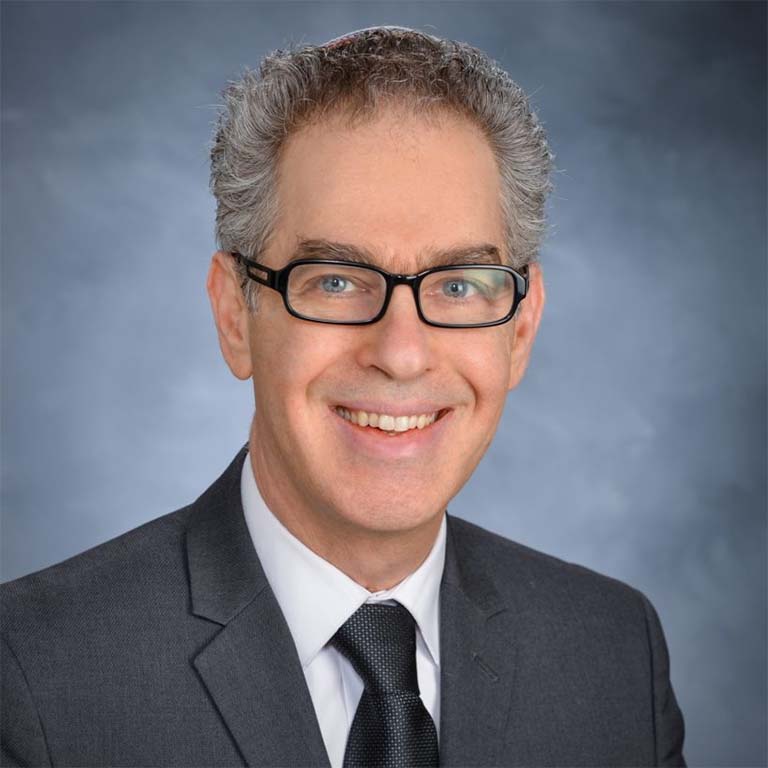
“This really is one of those gifts that places the museum on par with a number of other major museums that are going to be able to attract a wider viewership,” says Rabbi Jonathan Cohen, senior rabbi at TTTI.
“Through these prints, people can learn not only about Warhol but about these extraordinary Jewish figures – about their diversity, about the kind of fields that they affected. In other words, this is not only a gateway to art and to culture, but it can be a gateway to educational programs, to learning about history, geography, about these figures, about their impact in America and beyond America.”
The Temple Museum, founded in 1950, collects ritual objects and fine art from Jewish communities and artists throughout the world. A somewhat hidden gem, it has over 2,500 pieces, including a robust print collection.
Museum director Sue Koletsky calls the Warhol collection “the ultimate print portfolio for our museum.”
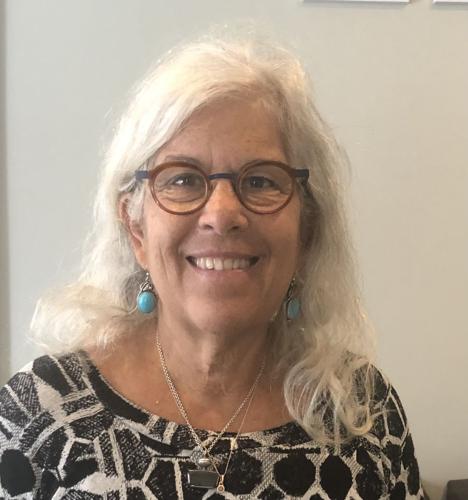
“Just to be able to see Warhol up close in a gallery setting is exhilarating,” Koletsky says. “It changes how you think about the world really, as he certainly did. I think that we certainly want everyone in the community to come to experience these pieces, to feel a sense of who these people are – who the portraits are about.”
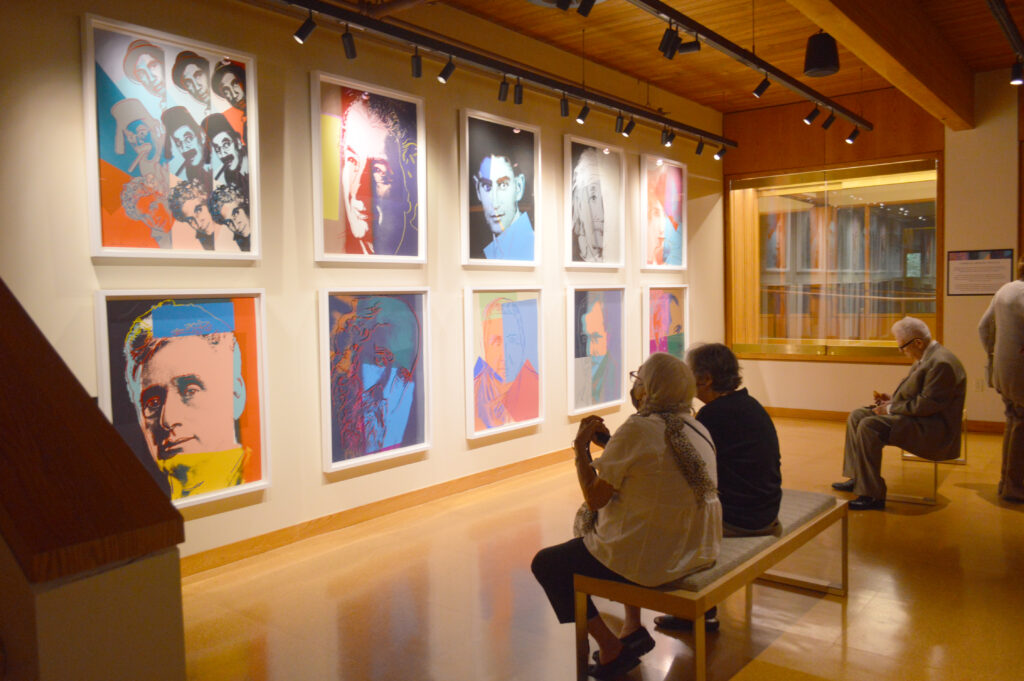
Inside the prints
“Ten Portraits of Jews of the 20th Century” were created in 1980 in New York City. The silkscreen portraits on paper depict Sarah Bernhardt, Louis Brandeis, Martin Buber, Albert Einstein, Sigmund Freud, George Gershwin, Kafka, the Marx Brothers, Golda Meir and Gertrude Stein.
The portraits began as Warhol’s drawings, based on archived photographs of the individuals. He then added blocks of color, suffusing the portraits with his modern, bold, graphic style. The prints are large – 40 by 32 inches.
Warhol, who died in 1987, had a great-grandmother on his mother’s side who was Jewish. He was also close friends with Jewish painter Philip Pearlstein, whom he met in art school, Koletsky says.
The idea for the series originated with Warhol’s art dealer, Ronald Feldman, both Forbes and The New York Times reported ahead of shows featuring the prints in Los Angeles and New York City. It was also reported that Warhol didn’t choose the subjects, but Feldman consulted with Susan Morgenstein, the Jewish Community Center of Greater Washington’s art director, and that Warhol wasn’t thought to be particularly invested in the subject matter.
“What the series reflects, however, is the distinctively modern experience of knowing many famous people but rarely knowing in any depth what they are famous for,” art critic Ken Johnson wrote for the Times in 2008. “Lots of people know the name Gertrude Stein, but how many have actually read anything she wrote?”
But the portraits show Warhol’s singular, undeniable talent; the series remains popular and has continued to be shown in galleries and museums.
“(Warhol) saw the world in a totally different way – and he made all of us see the world in a totally different way,” Koletsky says.
And through its own programming, The Temple is giving visitors unique opportunities to learn about who the subjects were and their diverse contributions to the world.
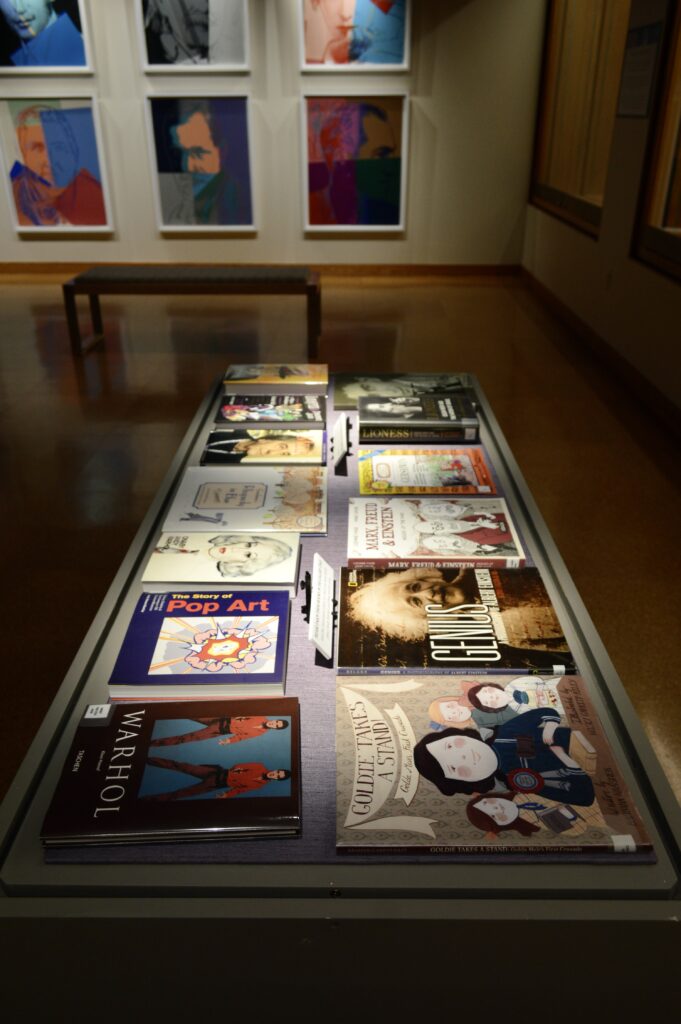
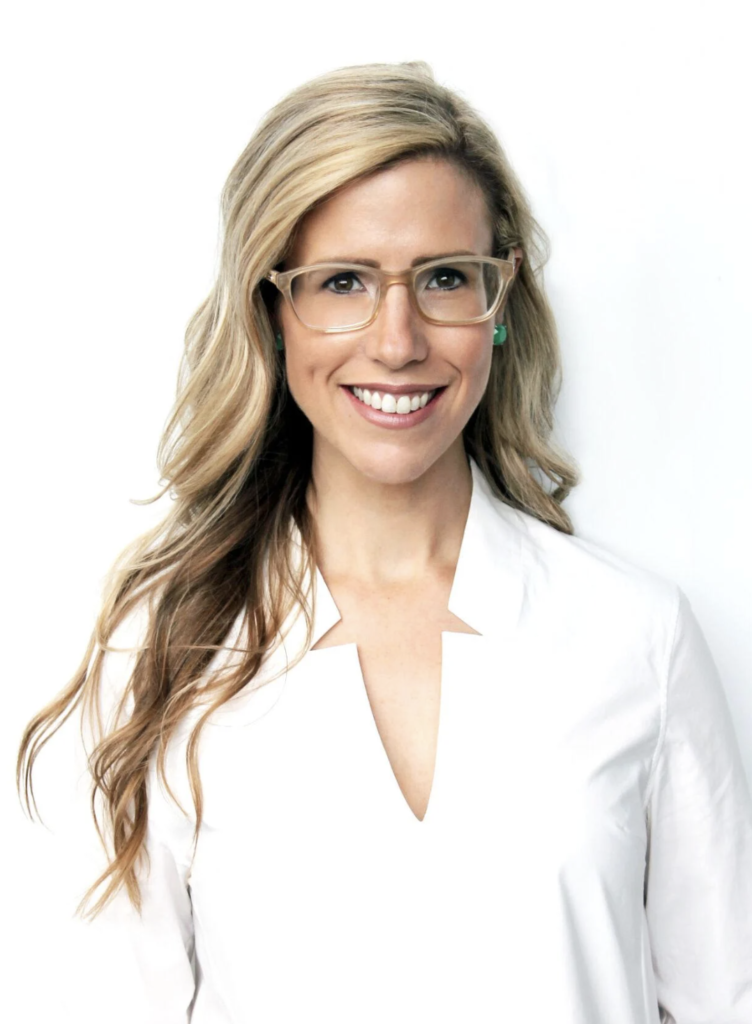
Megan Lykins Reich, executive director at the Museum of Contemporary Art Cleveland, and a Temple board member and Temple museum committee member, notes the portfolio represents “a major contemporary print acquisition that prominent museums across the country would desire to have in their holdings.” The works deepen The Temple’s contemporary art collection in a way that’s relevant to both religious and secular study, she says.
“Like all art, seeing the works in person is inspiring,” Reich says in an email. “The scale, color and sharp installation in The Temple’s gallery creates a dynamic dialogue between formal elements and subjects. I find myself evaluating Warhol’s aesthetic decisions in detail – why that stroke of color? Why that offset register? While also considering how Warhol’s approach shifts my perception of the subjects themselves. How do I reconsider them, or ‘see’ them anew? It’s very exciting.”
How they were acquired
The prints were gifted to the museum by Joel L. Saltzman and by the family of Leslie Wolf in his memory.
Saltzman and Wolf had been friends since third grade when they both attended Park Synagogue Religious School. After they grew up, Wolf resided in California and Saltzman in Washington, D.C.
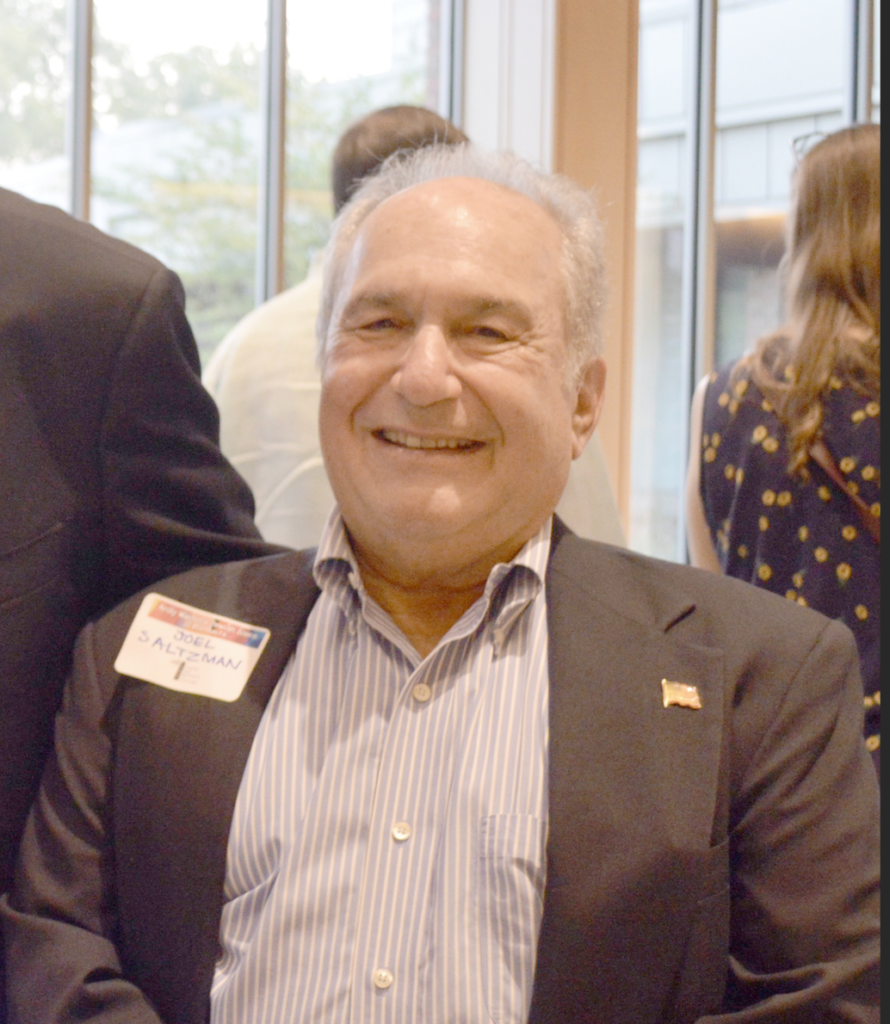
Saltzman – who was at the TTTI exhibition opening, along with family members of Wolf – says Wolf had been a fan of Warhol and expressed interest in purchasing the Jewish icon portraits. As Saltzman had a friend who knew Warhol’s silkscreen printer, Rupert Smith, in New York, he called to ask if the set was available. It was, and the pair bought them and each enjoyed five of the prints in their respective homes for decades.
Wolf eventually returned to Cleveland, where he enjoyed his prints until he died in 2012. As Saltzman began to contemplate retirement and moving, he got offers from fine art dealers to purchase the prints for their customers.
His brother instead suggested he donate them so the public could appreciate them long term, rather than having the portraits hang in “some affluent person’s dining room,” Saltzman says.
He and Wolf’s family both ultimately decided to give the portraits a new home where they could be viewed all together by many and for years to come. The Temple museum became that place, as Saltzman’s brother and sister-in-law were married there and he’s gone to services at The Temple before. He’s also known Koletsky for 40 years, he explains.
“It’s a great community and … we all agreed that the public would really benefit if this were open to the public,” says Saltzman, who lives in southwest Florida and also has an apartment in Beachwood.
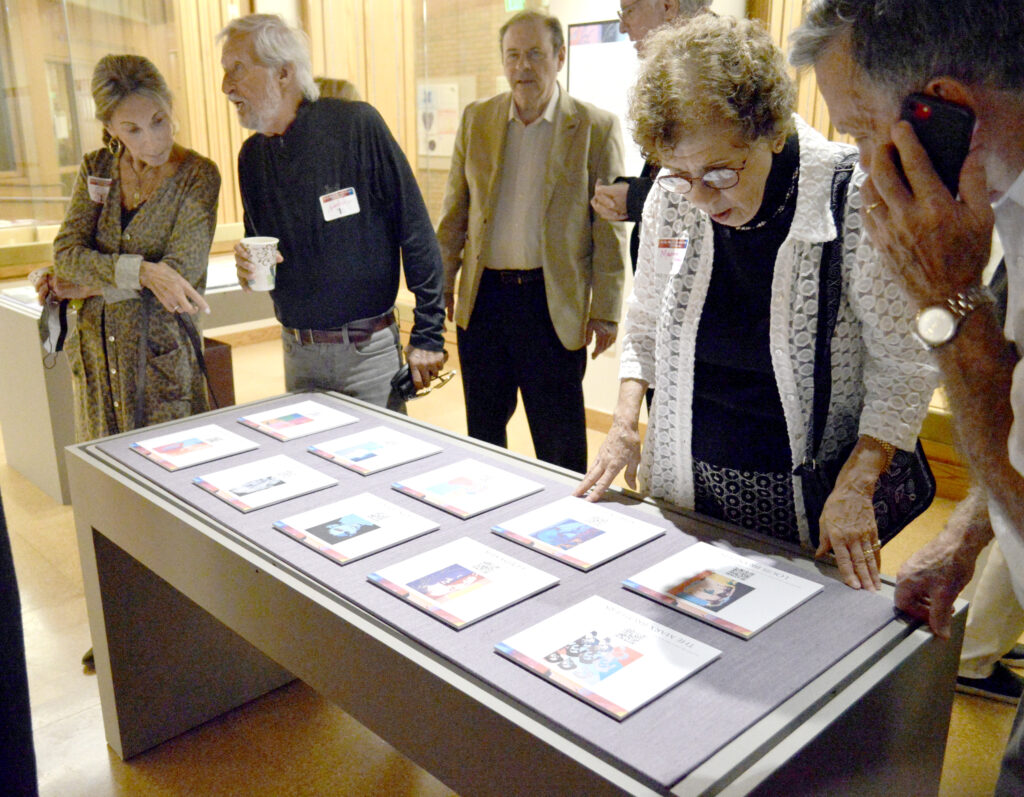
Looking back, forward
The Temple Museum was founded by Rabbi Abba Hillel Silver in 1950 to celebrate the 100th anniversary of The Temple, according to the museum’s website. It was housed at The Temple’s original location in University Circle in Cleveland before moving to its current location in Beachwood. It was one of the first museums of Judaica in North America, and one of only a few synagogue museums with significant collections, according to the website.
This new acquisition raises the museum’s profile even higher, Reich explains.
“Warhol is among the most renowned contemporary artists, really one of a few ‘household names’ in our country,” she says. “Consequently, these works add greatly to an already impressive Temple collection. They also create new awareness and interest in The Temple’s collection overall, and encourage the broader art community to become more curious about how art is collected and shared by organizations outside conventional galleries and museums.”
For that reason, an aim of the exhibition is to ensure the prints are accessible to those across Northeast Ohio and beyond. Programming to highlight the artwork and the people depicted is being led by The Temple’s clergy and others, ongoing through June 2023.
“I think what’s going to happen is that people are going to know that these prints are here,” Cohen says. “Our building is going to be appropriately open to be able to show these prints. We have a number of programs lined up that are going to feature these prints, and the idea is precisely to open our doors and allow members of the community – Jewish or non-Jewish, the arts community, the religious communities, a whole number of different sets of members of our community – to come out and to see these prints.”
